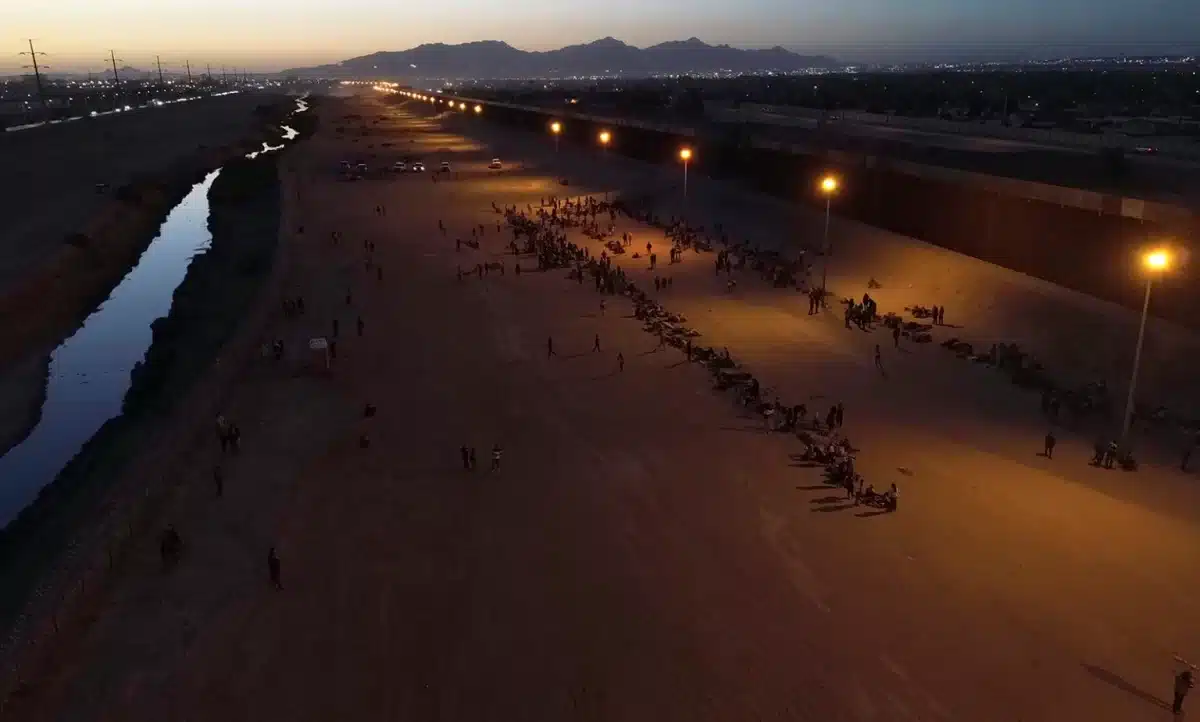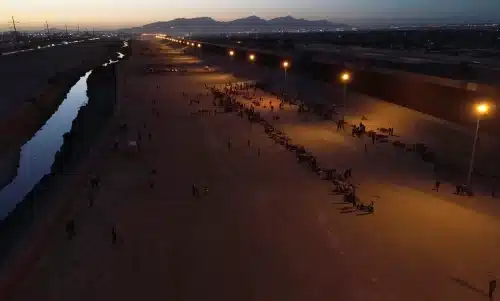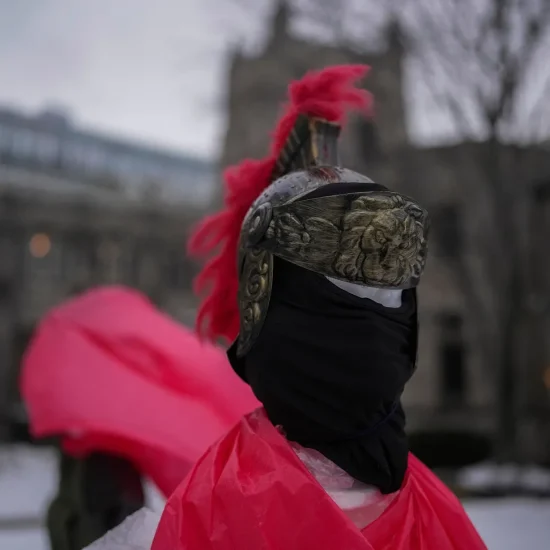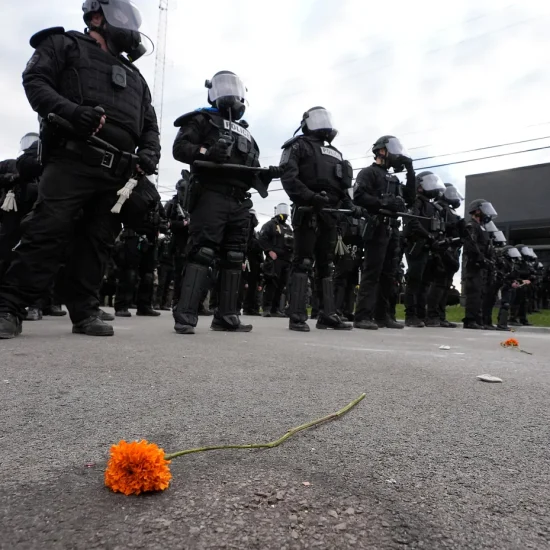
(RNS) — The number of crossings at the United States-Mexico border reportedly are down since Title 42 ended last week.
But some faith-based organizations tasked with refugee resettlement in the U.S. — many of which also help those seeking asylum in the country — say fixing the country’s broken immigration system is far from finished.
They point to new policies that took effect last week that are already exacerbating the strain on many shelters on the southern side of the United States-Mexico border.
“Today, things are going a little better than they were, you know, a week ago. There’s been a significant drop in apprehensions and unlawful entries,” said Mark Hetfield, president and CEO of HIAS (formerly the Hebrew Immigrant Aid Society).
“But I think that the jury really is out on the long-term impact, because these are all fixes that were temporary — frankly, some of them are unacceptable or even absurd — and they don’t address the root cause of the issue, which is the fact that there are no legal pathways for people to come into this country, and our borders have been out of whack for years now,” he said.
Hetfield testified Tuesday (May 23) about the impact of recent policy changes before the U.S. House of Representatives Judiciary Subcommittee on Immigration Integrity, Security and Enforcement.
HIAS and some of the other faith-based organizations that partner with the U.S. government to resettle refugees, including Church World Service and Lutheran Immigration and Refugee Service, have been urging the White House not to enact policies restricting people’s ability to seek asylum at the border for months.
As Title 42 ended last week, those agencies and others repeated their concerns. Title 42 is the emergency health rule that allowed the U.S. government to quickly expel undocumented immigrants crossing the border during the COVID-19 pandemic.

Migrants wait for U.S. authorities between a barbed-wire barrier and the border fence at the U.S.-Mexico border, as seen from Ciudad Juarez, Mexico, Wednesday, May 10, 2023. Asylum seekers showed up at the U.S.-Mexico border in huge numbers in anticipation of the restriction of Title 42 that had allowed the government to quickly expel migrants to Mexico. (AP Photo/Christian Chavez)
“Loving thy neighbor means ensuring refuge,” Anika Forrest, legislative director for domestic policy at the Friends Committee on National Legislation, said in a written statement from the Interfaith Immigration Coalition.
When the end of Title 42 didn’t turn into a “free for all at the border on the following morning,” it fell off the front pages of newspapers and websites, according to Alex Morse, deputy regional representative of Latin America and the Caribbean for Church World Service.
But he compared the policy shift to a disaster like a drought, rather than an earthquake or tornado that causes destruction overnight. The impacts will build slowly in the coming months, Morse said.
The new policies require people to register through an app called CBP One (Customs and Border Protection) before arriving at the northern border in order to meter the number of people applying for asylum, he said. Where they used to be able to arrive at the border and then apply for asylum, now if they arrive without an appointment, they won’t be allowed to apply again for five years, regardless of their circumstances.
CWS — which works with a network of 23 Christian-run shelters in Mexico called REDODEM — is hearing estimates that the U.S. is allowing about 1,000 people a day across the border. Meanwhile, Morse added, about 6,000 people are arriving in Mexico, hoping to cross — many of whom started their journeys weeks or months ago before the new policies were announced.
That short notice didn’t give shelters in Mexico time to prepare for the number of people arriving either, he said.
“The reports we are hearing from our shelter partners are alarming and frustrating. These organizations and groups have been raising the alert for months that the end of Title 42 would overwhelm their capacity,” Morse said in a written statement.
Complicating matters, he told RNS, the CBP One app is “very, very buggy,” and, even when it works, the number of available appointments is so far below demand, it has created a backlog of people filling shelters across Mexico.
“So, as that backlog builds, shelters at the northern border have become completely overwhelmed. As of Wednesday, public and private shelters in Mexico City were totally beyond their capacity,” he said.
One shelter designed for about 150 people took in more than 1,000, Morse said.
People are staying in those shelters for longer periods where they might have passed through for a meal and a shower before, he said, and their needs are more significant.
“At this point, it’s a bit too early to say exactly what the consequences of this will be, but we’ve been wanting to raise an alert to this hopefully prior to seeing those, you know, worst-case scenarios play out,” Morse said.
In his testimony to the subcommittee, Hetfield shared the story of one HIAS client from Venezuela who was detained in Mexico while struggling with glitches in the CBP One app.
The client was locked in a cell and unable to escape when a deadly fire broke out in March at an immigration processing center in Ciudad Juárez, Mexico. He survived by keeping his head in the toilet as the fire raged around him and now is in the U.S. receiving treatment for the burns all over his body, Hetfield said.
He urged the subcommittee to create more legal pathways for people to come to the U.S. to work, reunite with family or to seek safety — something he said Congress hasn’t done since the 1990s. That’s before most people had computers at home or relied on email as a form of communication, he said.
“We cannot fix the border without also reforming legal immigration pathways,” he told the subcommittee.
Hetfield said he isn’t optimistic that will happen after Tuesday’s hearing, which he described afterward to RNS as “scary” and “discouraging.”
“The majority of people are coming here because they need to work or they need protection or they need to be with family. It’s not to sell fentanyl,” he said.






